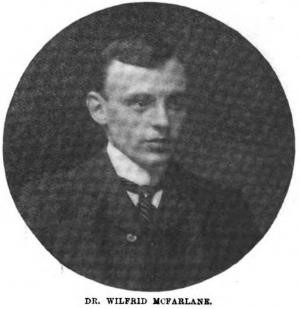Reading this week:
- Dragon Rouge by Fred E. Wagoner
- Dragon Operations by Major Thomas P. Odom
- Getting to Yes by Roger Fisher, William Ury, and Bruce Patton
- Getting Past No by William Ury
- Seasons in Hippoland by Wanjikũ wa Ngũgĩ
To make up for a whole bunch of blog posts, I am publishing in post format the biographies I compiled for my world-famous “The Chronicle of the London Missionary Society for all articles relating to their Central Africa Mission from 1876-1905.” I appreciate your patience!

Rev. William Charles Willoughby
Born: March 16, 1857, at Redruth
Rev. W.C. Willoughby studied at Spring Hill College and was ordained on May 1, 1882 [Jul 1882], slated for Urambo [Jun 1882]. He departed England on May 17, 1882 [Jul 1882], arriving at Zanzibar on Jun 19 [Sep 1882] and at Urambo on October 31, 1882 [Jun 1883]. Due to failing health, he returned to England, arriving August 21, 1883 [Nov 1883]. He resigned from the London Missionary Society in December, but was eventually reappointed to South Africa.
Dr. George Ashton Wolfendale, L.R.C.P. & L.R.C.S.
Born: November 18, 1868, at Tutbury, Staffordshire
Dr. G.A. Wolfendale studied Medicine at Edinburgh, under the Edinburgh Medical Missionary Society and was appointed medical missionary to Urambo. He departed England on June 9, 1890 [Jul 1890] and arrived at Urambo by December 24 [Feb 1891]. Due to ill-health he returned to England, arriving on July 23, 1892 [Sep 1892] and resigned from the London Missionary Society [May 1893].

Rev. Alfred John Wookey
Born: March 4, 1847, at Llanelly, Brecknockshire
Died: January 15, 1917, at Mowbray, Cape Town
Rev. A.J. Wookey studied at Lancashire College and Highgate. Originally appointed to the Bechuana Mission, he was ordained May 4, 1870, at Chase Side Church. He departed England for Bechuanaland on May 18, 1870. Eventually returning to join the Central Africa Mission, he was slated to work at Ujiji and again departed England on April 16, 1880 [May 1880]. He departed Zanzibar on June 14, 1880 [Aug 1880], and arrived at Urambo on September 11 [Nov 1880] and then Ujiji on October 3 [Dec 1880]. Due to repeated attacks of fever [Nov 1881], he returned to England and arrived August 14, 1881 [Sep 1881]. Rev. Wookey was then re-appointed back to Bechuanaland [Apr 1882]. His wife was born Jane Bevan. She joined him in Bechuanaland but did not join him in the Central Africa Mission [Apr 1880].

Rev. Robert Stuart Wright
Born: March 28, 1858, at Edinburgh
Died: 1926, in New Zealand†
Rev. R. Stewart Wright’s father was a master boot-maker and the family lived in Newcastle-upon-Tyne†. Rev. Wright left school at fourteen, becoming an office boy with a local railway and draper’s assistant before studying at Rotherham College†. He was ordained on May 5, 1887 [Jul 1887], and departed England on May 11, 1887 [Jun 1887]. He arrived at Fwambo on September 21, and then in March 1888 went to Kavala Island and then to Niamkolo. Due to ill-health, he returned to England, arriving December 13, 1890 [Jan 1891]. In 1892 he accepted a temporary pastorate [Mar 1892] but resigned from the London Missionary Society in December 1893 [Feb 1894]. He worked for the African Lakes Company on Lake Nyasa from 1896-1899, and then for the British Central Africa Protectorate in Blantyre†. Reappointed in 1902, Rev. Wright departed England on April 30 [Jun 1902], and was assigned to Kawimbe [Jan 1903], reaching there on August 3, 1903. He arrived in England on furlough on August 31, 1905 [Oct 1905], departing again on July 9, 1906. He was transferred to Niamkolo, visited England again from August 6, 1910 to September 2, 1911, and returned England again from Central Africa on May 27, 1915. He retired from the London Missionary Society in 1916, but then visited Australia on a Deputation in 1920, subsequently settling at Maungaturoto in New Zealand.
Notes:
Unless otherwise noted, missionary biographies are derived firstly from London Missionary Society: A Register of Missionaries, Deputations, Etc. From 1796 to 1923, prepared by James Sibree, D.D., Fourth Edition, published by the London Missionary Society, London, 1923. Brackets with [Month Year] indicate the issue of The Chronicle of the London Missionary Society which records the preceding event. Information denoted by a dagger (†) is from Christian Missionaries and the Creation of Northern Rhodesia 1880-1924, by Robert I. Rotberg, published by Princeton University Press, Princeton, New Jersey, 1965. Other sources are denoted by a footnote.






















You must be logged in to post a comment.